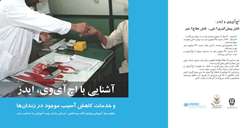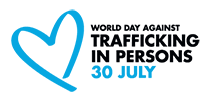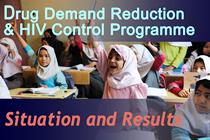UNODC Iran publishes training materials on the subject of HIV prevention for inmates, their families and the prisons' staff

Worldwide, HIV represents a serious health problem for prison populations. Injecting drug use remains one of the main routes of HIV transmission inside prisons. Due to the high rates of other infectious diseases like tuberculosis and hepatitis among prisoners, the impact of HIV in a prison environment is even more dramatic. The fundamental issue is the relationship between prison health and overall public health. Promoting the health of inmates and reducing the transmission of HIV in prisons improve public health outcomes, reduces the spread of infection in society as a whole and also increases the health and safety of prison staff.
The global statistics show that the levels of HIV infection among prisoners tend to be much higher than in the general population. One reason is that the groups most exposed and at risk to HIV such as injecting drug users are also at increased risk for incarceration. For example, drug users are treated as criminals in most of the communities, so that many of them spend years of their lives going in and out of prison.
The United Nations Office on Drugs and Crime (UNODC) is mandated to assist countries in their struggle against illicit drugs, crime and terrorism. Due to this comparative advantage within the United Nations system, UNODC has been given the responsibility to lead the UNAIDS response to HIV among injecting drug users and in prison settings.
In the Islamic Republic of Iran, the rate of HIV infection has been decreasing during recent years (from 3.84% in 2002 to 1.43% in 2009). Since 2002, many HIV prevention activities such as Methadone Maintenance Treatment (first as a pilot study of UNODC) and condom promotion in conjugal meeting rooms have been initiated inside the prisons. There have also been more training opportunities for the prisons' staff in the area of HIV prevention.
Producing Information, Education, and Communication (IEC) materials is one of the main HIV prevention activities in the community and in prisons. Appropriate and useful IEC materials are very effective in awareness raising and modifying risky behaviors.
In the framework of its country program for 2011-2014, UNODC Iran has developed one booklet and two brochures for Iranian Prisons' Organization on the subject of HIV prevention. The booklet is produced for non-medical prisons' staff and includes topics such as: the difference between HIV and AIDS, the routes of transmission and non-transmission, HIV prevention methods in the community and in the prisons, HIV diagnosis, treatment, stigma and discrimination against people living with HIV, and after-care services for released prisoners. The brochures have been specifically designed for the inmates and their families.
As Mr. De Leo, the representative of UNODC Iran mentions: "HIV prevention in Prisons is very important. Thanks to the Iranian government, many activities have been conducted in this area during recent years. But there is always more we can do to control the spread of HIV in the prisons". In 2011, UNODC organized three training courses on HIV/Tuberculosis for medical doctors working in countrywide prisons. Moreover, some advocacy meetings were held with the authorities of Iranian Prisons' Organization, the Ministry of Health, and the Drug Control Headquarters to discuss the subject of tuberculosis among (HIV positive) inmates. For 2012, two training packages on HIV/Tuberculosis (for medical doctors) and HIV and Sexually Transmitted Infections (STI) prevention among female prisoners are under development. Also, one training workshop on the subject of HIV/STI will be organized for the medical staff of women' prisons.


